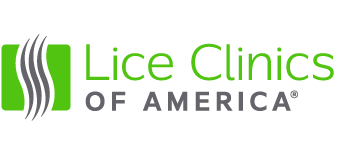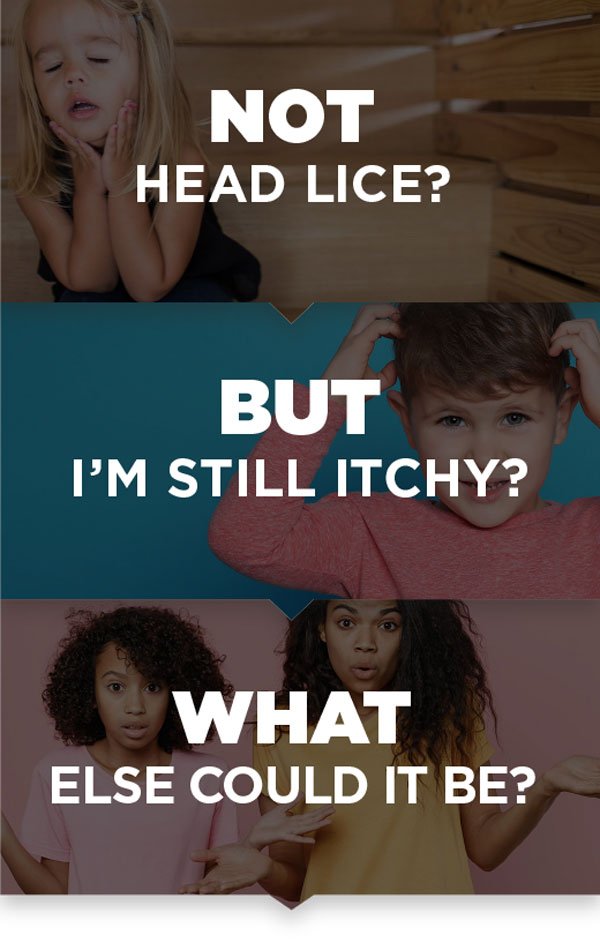NEGATIVE HEAD LICE SCREENING?
A guide to other conditions that may be causing your symptoms
You thought you had head lice, but your screening was negative. There are other conditions that may cause itching, irritation, and can mimic the symptoms and some of the physical findings experienced with a head lice infestation.
TINEA CAPITIS
Tinea Capitis is a common fungal infection that causes irritation and inflammation of the scalp. It is more common in children than adults but may affect anyone.
SEBORRHEIC SCALP DERMATITIS
Seborrheic Scalp Dermatitis is a common scalp condition affecting infants, adolescents, and adults. It causes irritation and inflammation of the scalp. In infants it is usually called “Cradle Cap”. This skin condition causes redness and scaly patches. Milder forms may result in stubborn dandruff. More severe cases cause thick, scaly areas and scalp irritation.
ATOPIC DERMATITIS
Atopic Dermatitis is the most common type of eczema. It is most frequent in children but can occur at any age. It causes the skin to be red and itchy. Sometimes the itchiness can be severe.
PSORIASIS
Psoriasis is a chronic, autoimmune disease affecting skin cells. It can involve the scalp. Psoriasis causes redness, irritation, and thick scaly areas of the skin. It tends to go through cycles. It may flare up for weeks or months and then subside for a time before flaring up again.
ALLERGIC CONTACT DERMATITIS
Allergic Contact Dermatitis is the result of an allergy or sensitivity to something. It can cause redness, flaking, and itchiness. In more severe cases, it may cause blisters. The most common cause of allergic contact dermatitis on the scalp is a hair product.
FOLLICULITIS
Folliculitis is a common skin condition in which the hair follicles become inflamed. It is usually the result of a bacterial or fungal infection of the hair follicle. This may cause small pus-filled bumps like little pimples and may cause irritation and itchiness.
CYSTS
Cysts are pockets or sacs filled with fluid or some other substance. They vary in size from very tiny to very large. There are many different types of cysts and they can occur anywhere on the body. Several different types of cysts can occur on the scalp. They may feel like tiny bumps or large lumps and they can cause irritation or discomfort.
A Sebaceous Cyst is one of the most common types on the scalp. Sebum is the oily substance secreted by sebaceous glands. It keeps our skin hydrated and soft and our hair soft and supple. If the duct of a sebaceous gland on the scalp gets blocked, the sebum hardens and forms a sebum plug. This is like a blocked pore on any other part of the body. The material released is a firm waxy plug that may mimic a nit, except it is easy to move. A nit is firmly cemented to the hair shaft and is immobile. If the duct of a sebaceous gland is blocked for a long time, the trapped sebum builds up forming a cyst.
HERPES ZOSTER
A Herpes Zoster eruption is known more commonly as Shingles. Shingles can erupt anywhere on the body, including on the scalp. Shingles can cause irritation, discomfort, and painful blisters.
SCABIES
This common infestation is caused by a mite. It usually does not affect the scalp, except in infants or people who are immunocompromised. It can cause small bumps which are intensely itchy.
BED BUGS
Like head lice, these small parasites feed on human blood. Unlike head lice, they do not live on the body. Their bites leave red welts which may be painful or itchy. While they may affect the scalp, their bites are more common on the face, neck, and other areas of the body.
FORMICATION
Formication is the sensation of insects crawling on or under the skin, but without physical findings. There are many things that can cause formication including some neurologic conditions, medication/drug use or withdrawal from certain medications/drugs, and some psychiatric disorders. Formication requires evaluation by a medical professional to determine the underlying cause and to manage or treat the symptom.









